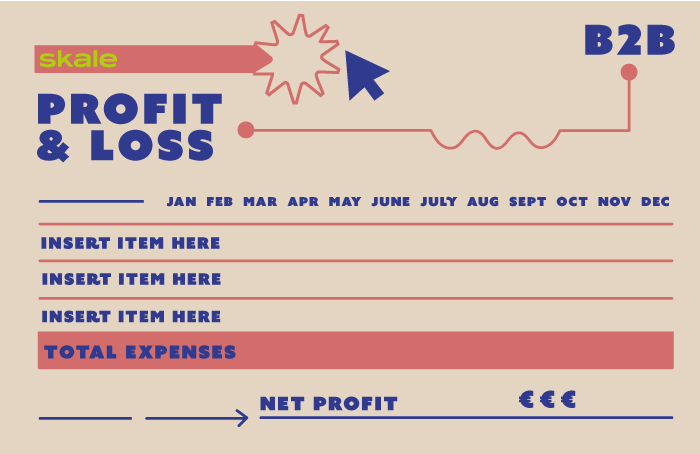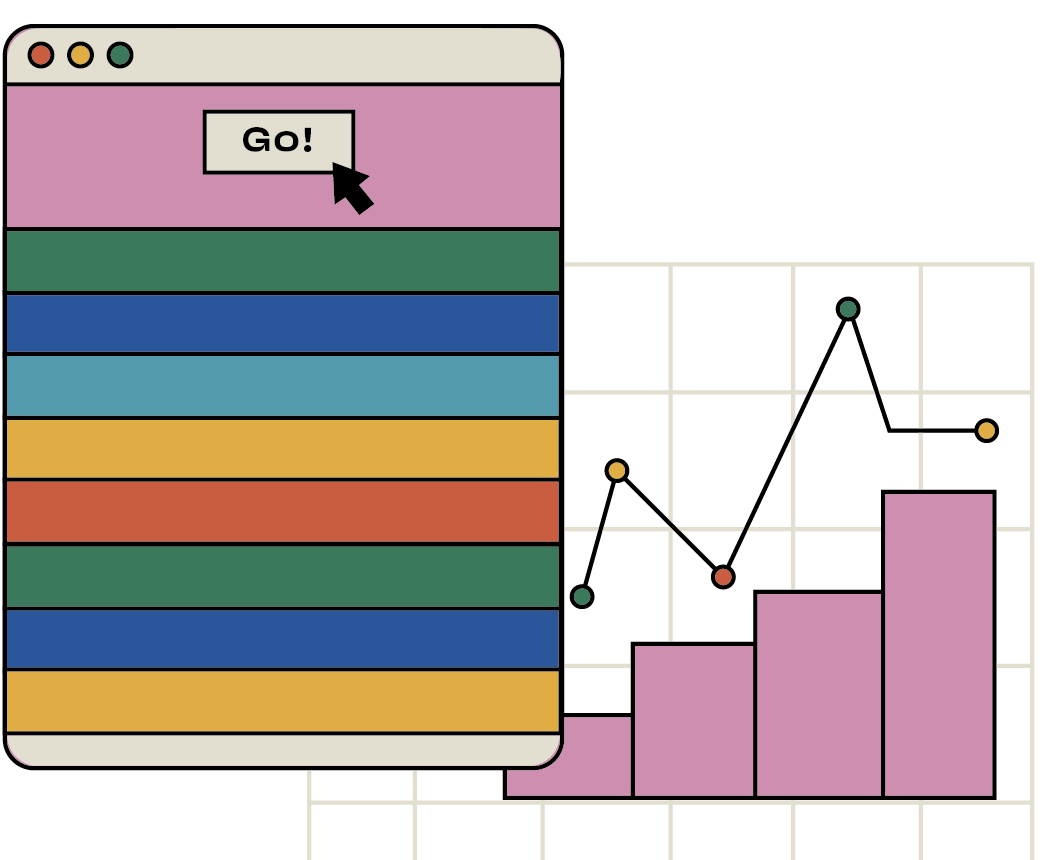
The best 8 SaaS marketing events to attend in 2024
In this comprehensive guide, we'll showcase some of the best SaaS marketing events in 2024 that you shouldn't miss.

All businesses need to build a profit and loss statement. Whether you build one quarterly or annually, it’s up to how your business operates financially—you’ll need to do one nonetheless. This article is specifically for building a profit and loss statement for marketing, and even more specifically, a marketing P&L for a SaaS business.
We’ll take into account metrics and revenue streams that are unique to SaaS marketing teams and SaaS financials. By the end of the article, you should be crystal clear on everything there is to know to build a marketing SaaS P&L.
We’ll also run you through how to effectively manage and maintain your marketing spend by using a financial method to effectively treat your marketing department like a business within a business—keeping it profitable, and valuable.
A P&L, otherwise known as an income statement, is a financial statement that summarizes the revenues, costs, and expenses incurred by a business during a set period. P&L statements provide information on the company’s wellbeing and insights into any areas that may need improvement.
This isn’t much different when it comes to a marketing P&L statement however there are some specific key metrics that aren’t included in standard financial statements. The relevant metrics are:
We’ll dive deeper into these shortly—for now let’s consider why a marketing P&L is important for getting a full picture of your entire company’s performance.
In order to best answer this question, we spoke to Skale co-Founder, Italo Viale:
“For marketing, running a P&L approach to spending means, in theory, that you can indefinitely spend on the activities that drive near-term revenue within an agreed ROI constraint, payback period, or maximum cost of acquisition with the finance department.
This approach aims to avoid the constraints that come from fixed budgets, it gives marketing the tools to drive long-term growth within a profitability ratio that doesn’t limit resources allocation.
It’s a mind shift that views marketing spend as an investment for growth, and not a cost of doing business.”
So there you have it—a marketing P&L validates marketing as an investment for growth and enables teams to create a more flexible marketing budget. It allows you to spend on marketing activities—within a pre-set constraint—without worrying that you’re wasting time, effort, and resources.

Before we dive into the specifics of a marketing P&L, let’s look at what’s included as standard in a SaaS company P&L statement:
Fab, now let’s dive into the marketing-specific side of things. Below, we’ve outlined some of the essential metrics you need to create your marketing P&L statement.
As the name implies, this allows you to calculate how much money your organization is spending to bring in one new customer. Customer acquisition cost (CAC) is one of the most important marketing metrics for SaaS companies.
You need to take into account all of the marketing expenses that come into play, such as:
This list isn’t even exhaustive, there are plenty of other ways you could be spending on customer acquisition costs. Once you’ve got all the relevant info, here’s the formula to calculate CAC:
CAC = [Total cost of sales + Total cost of marketing] / New customers acquired
This is an essential metric for your SaaS company marketing P&L statement, and alongside customer lifetime value it gives a real insight into how efficiently you’re spending your marketing budget.
This metric helps determine how much, on average, each customer spends with your business throughout their user lifetime. Combined with CAC, this gives you a good insight into how much you’re spending to acquire a new customer vs how much they’re spending on your business.
You want to aim for a 3:1 ratio of CLTV to CAC, and can consider the figure as your marketing ROI.
Here’s the formula to calculate CLTV, where ARPA is average revenue per account and MRR is monthly recurring revenue:
CLTV = ARPA / Net MRR Churn %
Next up is the annual contract value. This metric is especially useful for SaaS companies running a subscription service employing different pricing plans. It allows you to better understand the yearly value of a contract, therefore allowing you to make better budget decisions based on expected income.
Here’s the formula for calculating annual contract value (ACV):
ACV = [Total contract amount / contracted months] x 12
This is an important metric for a marketing P&L for SaaS businesses.
Customer retention is an essential part of your marketing strategy and a must on any marketing P&L statement. It’s often looked at under the same lens as churn, but that’s a mistake we advise SaaS companies to avoid.
Nurturing your existing customers instead of focusing on reducing churn is key for extending and maximizing the CLTV. It’s an opportunity to take a long-term approach to increasing CLTV by upselling to your current customers.
You can calculate customer retention rate using this formula:
CRR= [(E-N)/S] x 100
E = number of customers at the end of the time period
N = number of new customers gained within the time period
S = number of customers at the beginning of the time period
When it comes to understanding retention, it’s also a good idea to calculate your churn rate. This identifies how many customers sign up to your platform and then leave in a certain period of time. The formula for calculating churn is:
Customer Churn Rate = [S-E]/S
Last up is lead velocity rate, which tells you how quickly new leads are being generated by the marketing department sales funnel. In order to start properly calculating this, you of course need an accurate and consistent understanding of what your team considers to be qualified leads and how you go about calculating sales conversion points.
Doing so helps you evaluate the progress of your marketing and better identify patterns within your marketing efforts. It also allows you to set benchmarks for coming quarters, and fully grasp if you’re on track to hit the goals you’ve set.

Fill your ARR gap with the power of organic search- the agencies on this list can help
See the listThe information required for a marketing P&L statement mainly comes from your cash flow statement and from the estimated calculation of depreciation—which you can get from your tax advisor. There are some other items you need, such as:
Once you’ve gathered all the relevant info, you’re ready to start building your SaaS company P&L statement.
We’ve outlined the steps needed to create a marketing income statement, take a look.
In a standard income statement, marketing would be considered operating expenses.
However, as we’re constructing a marketing income statement, we’ve included the relevant SaaS metrics outlined above. Here’s how you can expect it to look when properly structured:
Now you know the importance of a marketing P&L, it’s time for a couple of tips on how to best create one. Following these pointers will help ensure that your profit and loss statement supports your wider business goals.
When creating your marketing P&L, you want to make sure to align your goals with your company’s growth plans and other SaaS business decisions. Consider what your goals are, what you need to monitor in order to maximize your chances of hitting them, and what metrics you need in order to give you accurate information regarding your progress.
Here’s what Adelina Peltea, COO at Homerun had to say about setting your goals in line with expansion:
“Look at your strategy and your resources—this will give you a good understanding on how to define your goals, and also the optimal unit economics. Then from there, you work with that by mixing things you know will work with some innovation.”
“Cash flow basically determines how long you can survive before the next funding event and how much and how fast you can invest in growth.”
– Manuel Jaffrin, private investor and startup advisor.
Understanding your company’s cash flow is essential for maintaining and growing your business and SaaS product, both in the early stages and further down the line.
Used alongside your marketing income statement, it’s a really great way to evaluate the health of your SaaS business and how your marketing efforts are impacting your overall financial wellbeing.

Take the guesswork out of your SEO with our free ROI tracker
Download nowA marketing P&L statement is a financial statement that highlights the revenues, costs incurred, and expenses—such as operating expenses and administrative expenses—incurred by a business over a set period of time. It informs the marketing team on the success of their marketing efforts and the finance team on how that plays into overall business health.
A P&L statement is important for determining the success of your efforts during a set period and allows you to more accurately allocate resources throughout the coming period.
Learn more about
SaaS Marketing

The best 8 SaaS marketing events to attend in 2024
In this comprehensive guide, we'll showcase some of the best SaaS marketing events in 2024 that you shouldn't miss.

7 Best SaaS Copywriting Agencies & Services in 2024
11+ SaaS copywriting agencies that will educate your audience, boost revenue, and nurture leads.

9 SaaS Content Marketing Agencies in 2024: Reviews & Pricing
Create content that generates serious revenue when you work with a SaaS marketing agency from this list.